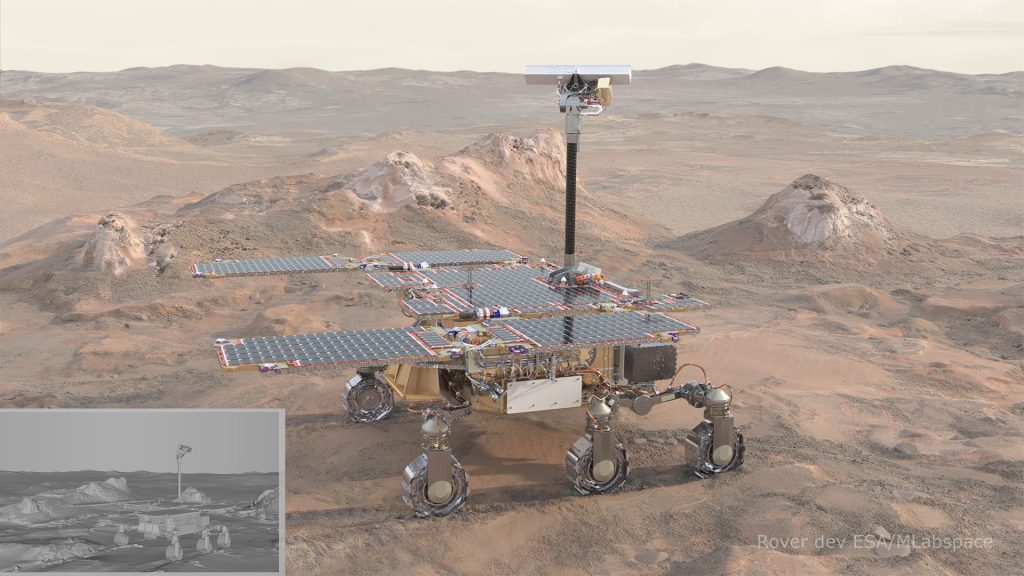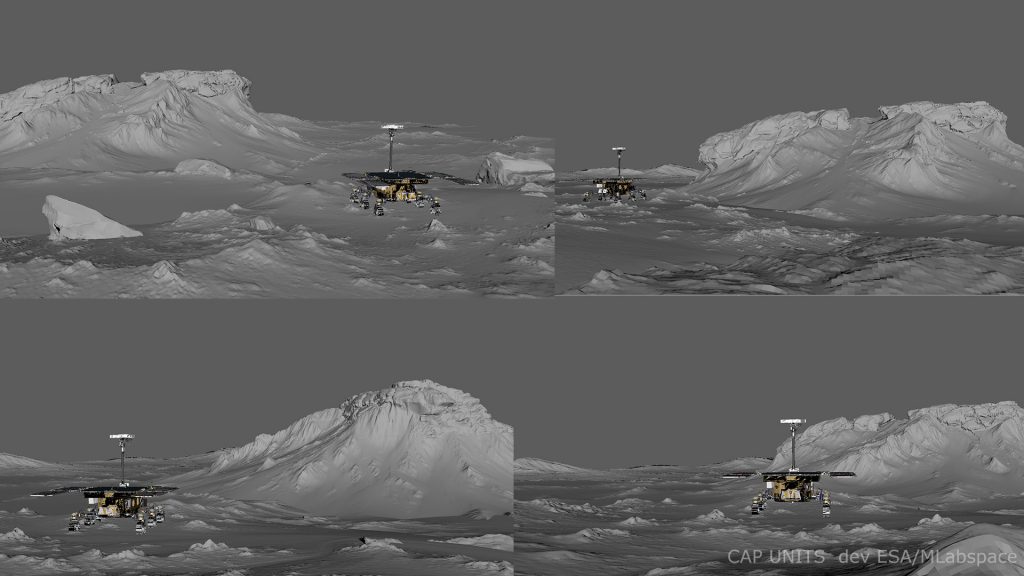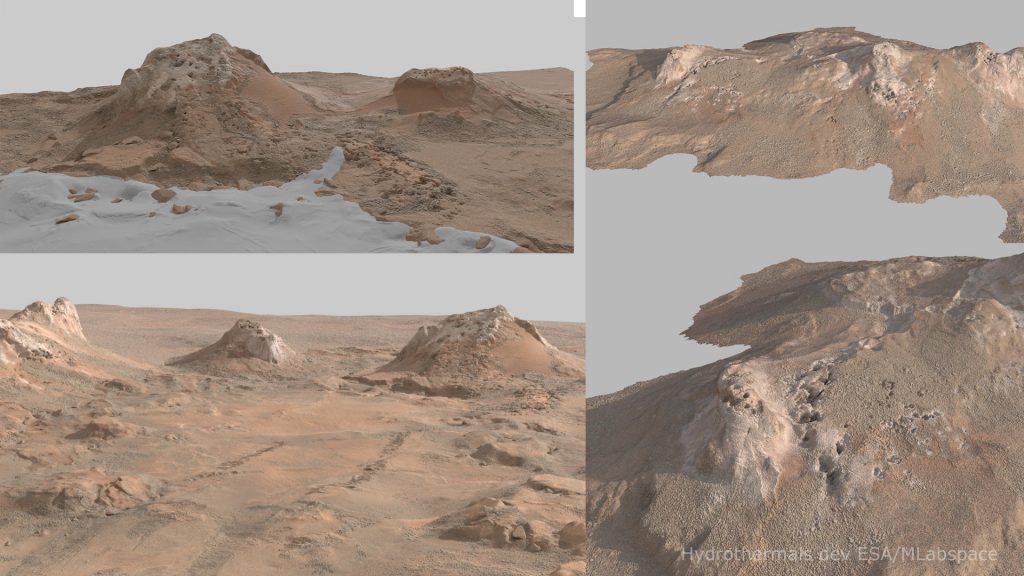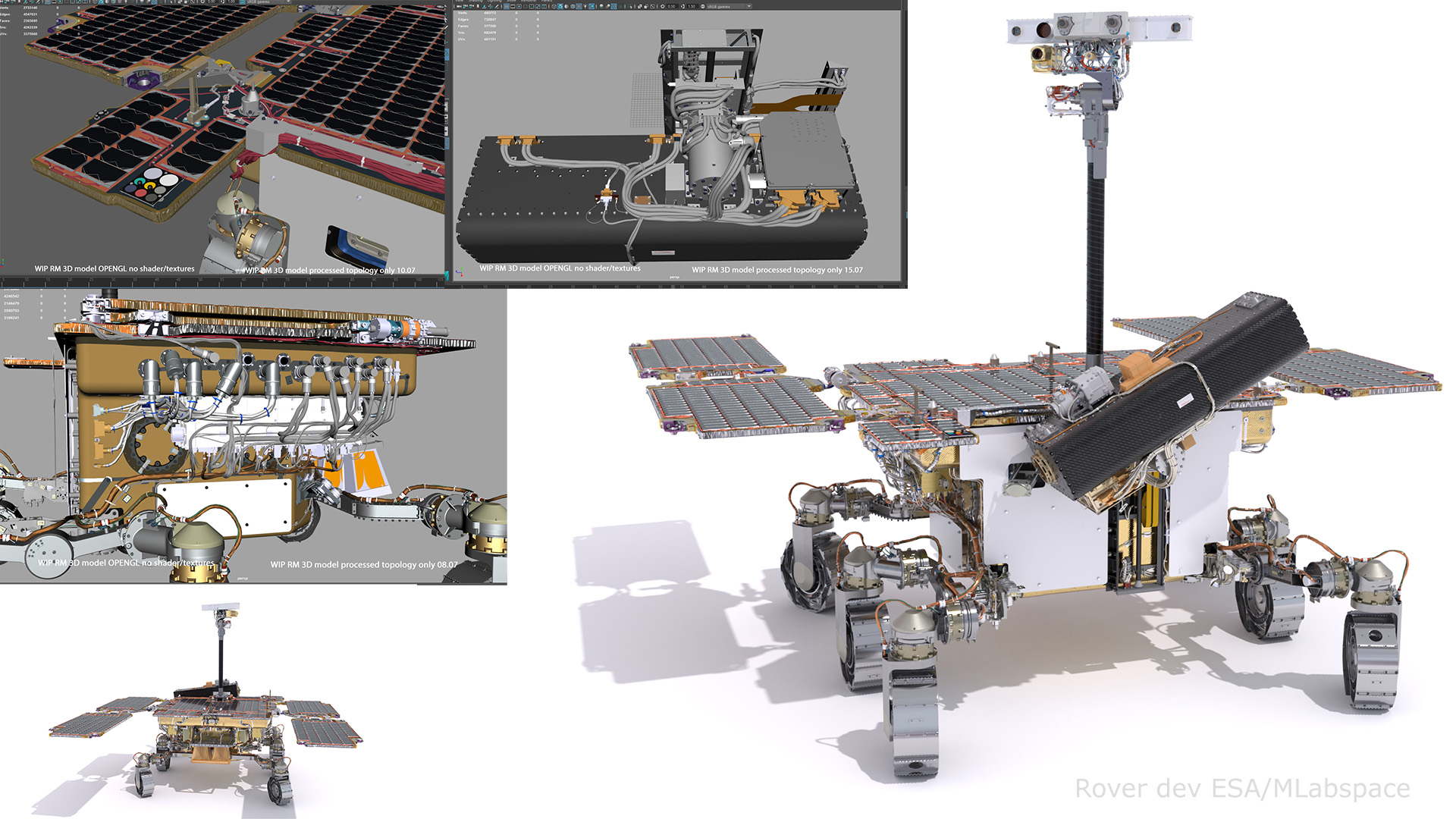This premiere will be followed by a series of episodes covering different mission phases and detailed sequences with the rover’s science instruments in action.
The mission has been years in the making and faced constant twists and challenges, and so did its movie. Here is the story behind the most accurate animation of a Mars mission made so far.
Photorealism
The one-minute trailer begins with the approach to the Red Planet in 2030. The visual journey takes us through separation from the carrier module, hypersonic entry, and supersonic parachute deployment, followed by scientific operations on the martian surface. Each scene has been modelled in minute detail – everything down to the colour and size of the wires, sticky tape and scratches.
“It is an exceptionally challenging mission to visualise,” admits Marc Thiébaut, animator of the movie and technical director of Mlabspace. His own journey with the rover animations started in the ExoMars concept phase, back in 2000.

“Visualisation technologies have improved over the past two decades, but this is not what this production is about. Every sequence involves bringing to life something that is yet to happen. For ExoMars, the story was and remains the main lead: how do we get to Mars and how do we search for life?” explains Marc.
The rover and Mars are the main characters. The team wanted to make them visually convincing, conveying the complexity of the mission in an attractive, yet accurate manner.
“It is a precise scientific depiction that transports you to Mars. We want to share the journey with the audience,” says Jorge Vago, ESA’s ExoMars project scientist. “We would like this material to be used broadly by the public and the scientific and engineering community,” adds Jorge.

Real sounds from the parachute release mechanisms recorded during testing are part of the movie, and you can hear the crunch of metal from the wheels as the rover moves onto the martian soil for the first time.
The visuals are genuinely a collaborative endeavor. Marc worked closely with the ExoMars team on the mission concepts since the rover’s early definition phases.
“The animation is the result of a deep synergy with the science and project teams. Like me, they are driven by the passion to do things right, staying curious and humble. I hold a special connection to this mission,” says Marc.
The landing site
The trailer shows the descent module as it begins its plunge through the thin martian atmosphere at an entry speed of 20 000 km/h, 120 km above the surface. Cocooned inside is the Rosalind Franklin rover.
Everything is automated and happens 300 million kilometres away from Earth, according to a pre-programmed sequence. There is real footage of the 16-metre supersonic parachute opening. The mission will also use a second parachute that is 35 m wide, the largest to ever fly on Mars.

The Oxia Planum landing zone comes into view with the outlines of craters and ridges. Now on the martian surface, the rover approaches the wind-eroded remains of an ancient, hydrothermal system – a place where fluids were coming out from the ground driven by the young Mars internal heat.
With an estimated age of four billion years, Oxia will be the most ancient location explored on Mars. Scientists believe that this region may have once been the coastal area of a very large body of water.
“The movie shows one of the most interesting locations to look for signs of ancient life on Mars – a once-submerged hydrothermal system. It is the type of setting that could have nurtured the origin of life on Earth,” explains Jorge.
In the trailer, the colours are lighter than the bright red terrain in other areas of Mars. This is dictated by the presence of clay-rich soils, formed when volcanic material came into contact with water billions of years ago.

“We paid great attention to the geologic landscape of Mars. Everything is portrayed realistically, including the colour of the sky and the terrain depending on the time of day,” says Jorge.
The rover in action
The spacecraft, the rover and martian landscapes are as true to reality as possible for a simulation.
The visuals show the spacecraft structural engineering faithfully. Upon landing, Rosalind Franklin opens its solar panels and locomotion system elements. The rover rises, the mast deploys, cameras capture a panorama.
The cameras and the ground penetrating radar will show scientists on Earth what lies ahead and under the rover. This is precious information to plan the drilling, a fundamental part of the mission.

The Rosalind Franklin rover drill has a maximum penetration of two metres to get access to well-preserved organic material from four billion years ago, when conditions on the surface of Mars were more like those on infant Earth.
“We need to obtain our samples from the subsurface because we want them unaffected by the radiation bathing the topsoil. The two-metre penetration of the drill will allow us to explore Mars’ third and uncharted dimension – depth,” says Jorge.
What’s next?
The trailer is a glimpse of what is to come after Europe secures its first successful landing on Mars.
The next episode will show the rover focusing on surface exploration and drilling.
There is science to be done. Join the adventure.

Discussion: no comments